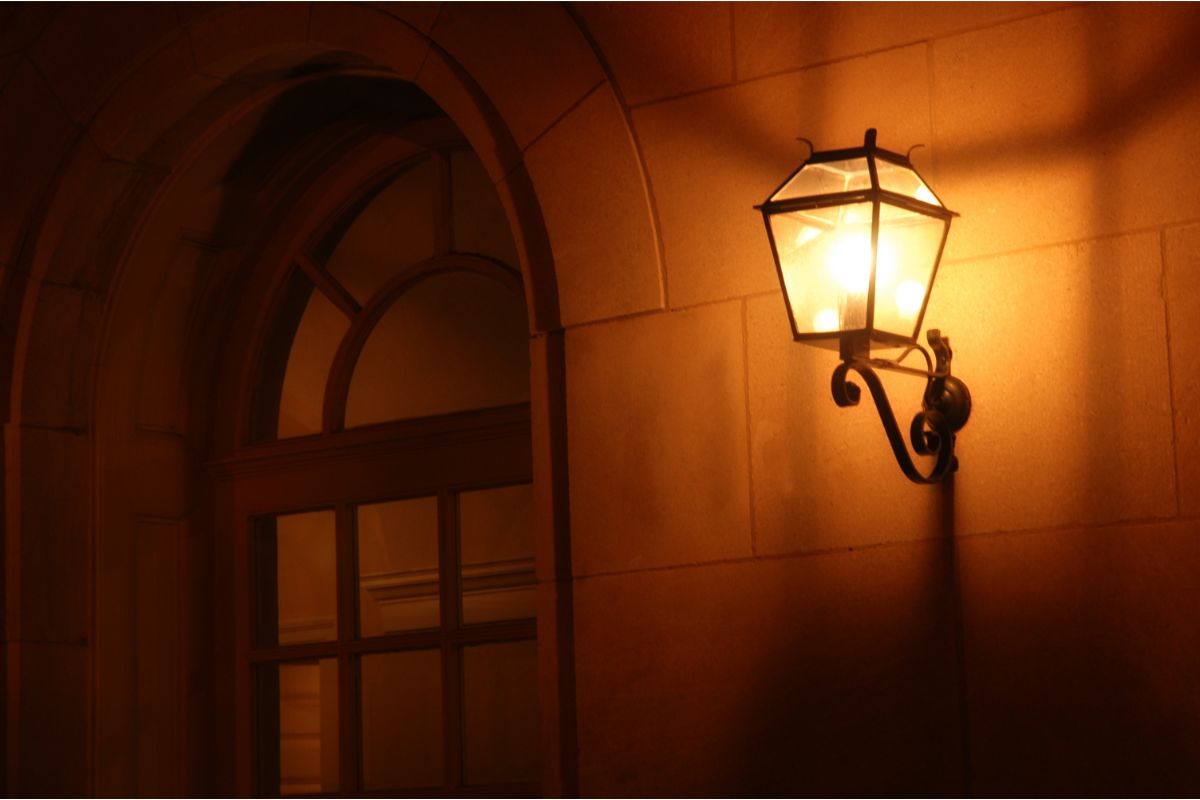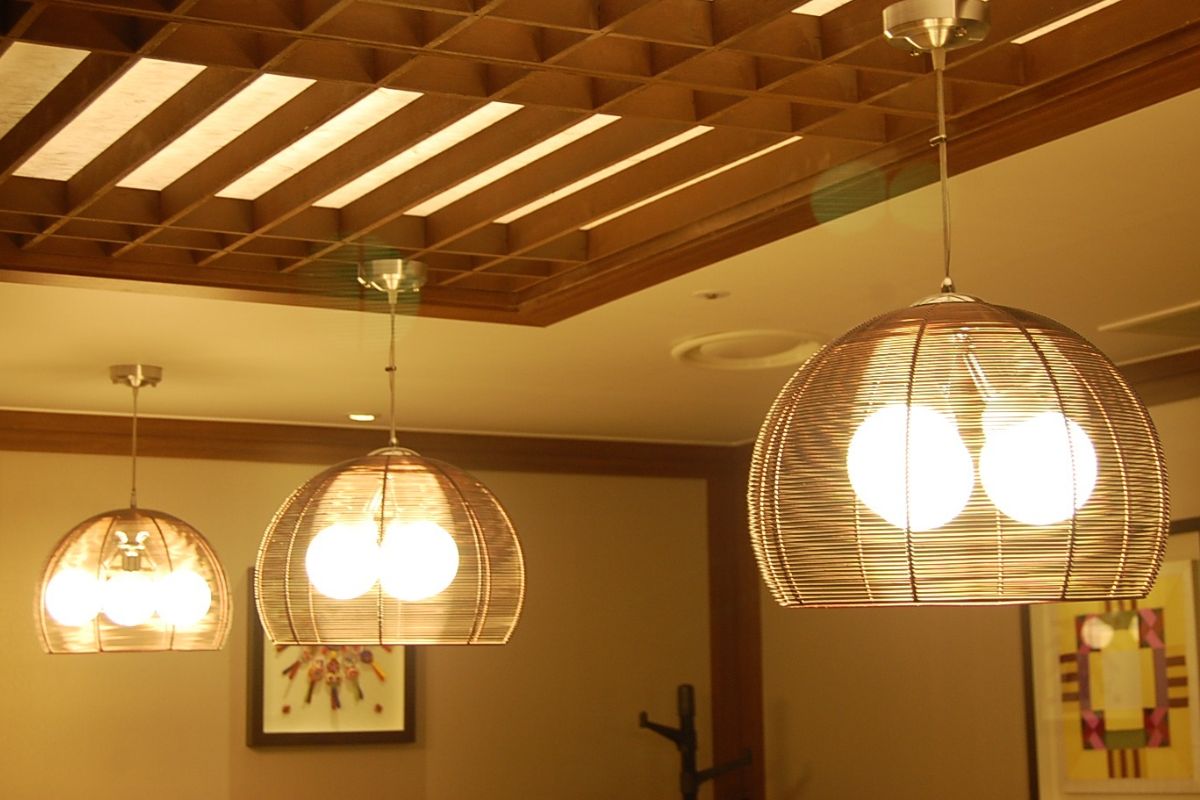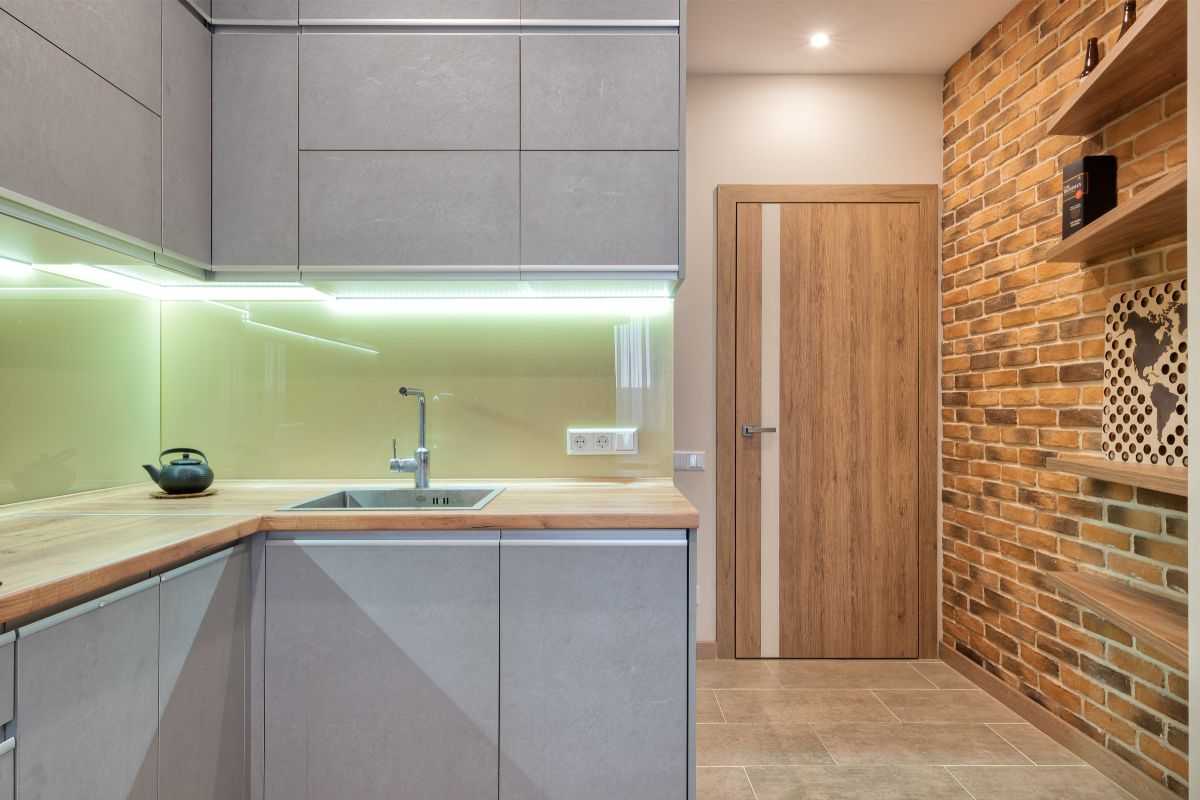In this, the age of smart lighting, I think we can all agree that lighting is no longer simply a practical feature of a space, but a decorative element too, however, way before LED technology invited the rainbow into our homes, there was up lighting!

While it was unheard of for up lighting to be used in a residential setting, it’s been a staple of commercial, historic, and down-right fancy buildings for decades, but what exactly is it?
Well, you know how most lights point down to illuminate our surroundings? Up lights point up in order to accentuate certain structural or informational features.
However, in the modern age, these accent lights have taken on an entirely new role, one that you just might be looking to fill in your home.
How Was Up Lighting Used Traditionally?
As established, up lighting of yesteryear was typically used to highlight architectural features such as pillars, entryways, or stairs. But they have also been used to illuminate placards and signs after dark.
This last implementation has become particularly common among stately homes, commercial buildings, and medical facilities such as dentist and doctor offices.
In some instances, up lighting has even been used to draw the eye to natural features of a garden area at night, but not every traditional deployment of up lighting takes place outside. Up lighting is often used in museums and art galleries to provide pristine visuals on the exhibits.
How Has The Role Of Up Lighting Changed?
First and foremost, as lighting has well and truly been democratized across the western world, up lighting is now a realistic option for residential lighting, but that doesn’t mean you need amazing works of art or architectural marvels to make use of this fixture orientation!
Much like the smart LED bulbs that allow us to make custom scenes to complement our moods and various times of day, up lighting is now considered a fantastic way to cultivate a vibe, especially if there is a party on the horizon!
Typically, they’ll be placed in the corners or around the entire perimeter of a venue. By selecting colored up lighting, you can completely change the atmosphere of the room, even if they’re simply acting as wall accents.
Paired with various down and dynamic light fixtures, they can create a fully immersive experience to help people get in the mood and hit the dance floor!
But that’s not to say that up lights designed for a good time can’t serve a practical purpose too!
If you’re throwing a shindig at your place, and you want to designate an area as the chillout space, the cloakroom, or perhaps even the present storage area if you’re expecting some dynamite gifts, why not use up lighting?
It’s a fun and creative way to split a venue into sections, providing guests with a seamless party experience no matter where they are in the building.
Up lighting has also become a pretty popular feature of modern kitchen designs, as small recessed lights positioned around the perimeter of the room give you clear visuals on cabinetry.
Keeping With Up Lighting Tradition

Of course, just because there are new and exciting ways to utilize up lighting, doesn’t mean you can’t re-constitute traditional applications in a residential setting.
For instance, if you’ve got some lovely prints on the wall, and you want them to be visible come evening time when the overheads are switched off and the lamps are switched on, up lighting can take care of that for you.
You may even want to emphasize a point of interest in a particularly well-decorated area of a room or highlight an accent wall that would otherwise be shrouded in shadow when the sun goes down.
Up Lighting In The Yard
Traditionalists will likely say that if you haven’t got anything to highlight, up lighting is a bit of a waste, but the glowing pillar of light is in itself an ornate feature that can be used to beautify an outdoor space at night.
But if you’d rather use your up lighting for more practical purposes, you can use it to mark out water features such as ponds in order to warn people of their presence and prevent yourself or your guests from taking an impromptu dip at one of your social events.
You can also use up lighting to draw attention to particular plants or trees, but darkness is important for plant life, as it gives them a chance to rest, so if you choose to do this, make sure to switch them off for a good portion of the evening.
Up Lighting At Weddings
Up lighting has become a hugely popular ambient feature of indoor weddings, largely because of the way it can enhance event photography and videography.
Adding depth, atmosphere, and drama to pictures and footage of a wedding, up lighting is a minor expense that can help a couple get the most out of their larger investments on their big day.
These kinds of lights are particularly handy if you’ve managed to snag a fancy, historical venue for your wedding ceremony and reception, as you can use them to accentuate the architectural flourishes around the room, ensuring it feels as expensive as it was to book.
What Kinds Of Up Lighting Are There?
Up lighting is just as fleshed out a portion of the lighting market as down lighting, so there are really no limits to contend with — Whatever you can think of will likely be available if you look hard enough.
From puck lighting that can be installed in the floor to spot light-style up lighting that simply points upward… it’s all available, in both wired and wireless formats. They can be white or color-changing lights, they can be operated by hand or remotely via companion apps. If you can dream it, it likely exists.
Final Thoughts
Up lighting has now officially entered the residential realm, and it’s about time! For too long we’ve had to get by with down lighting alone, but now we can add another dimensional element to our lighting that makes our living spaces even more enjoyable.
Whether you’re planning the party of the century or simply want to augment your home with some off-the-wall accent lighting, up lights are the way to do it!



